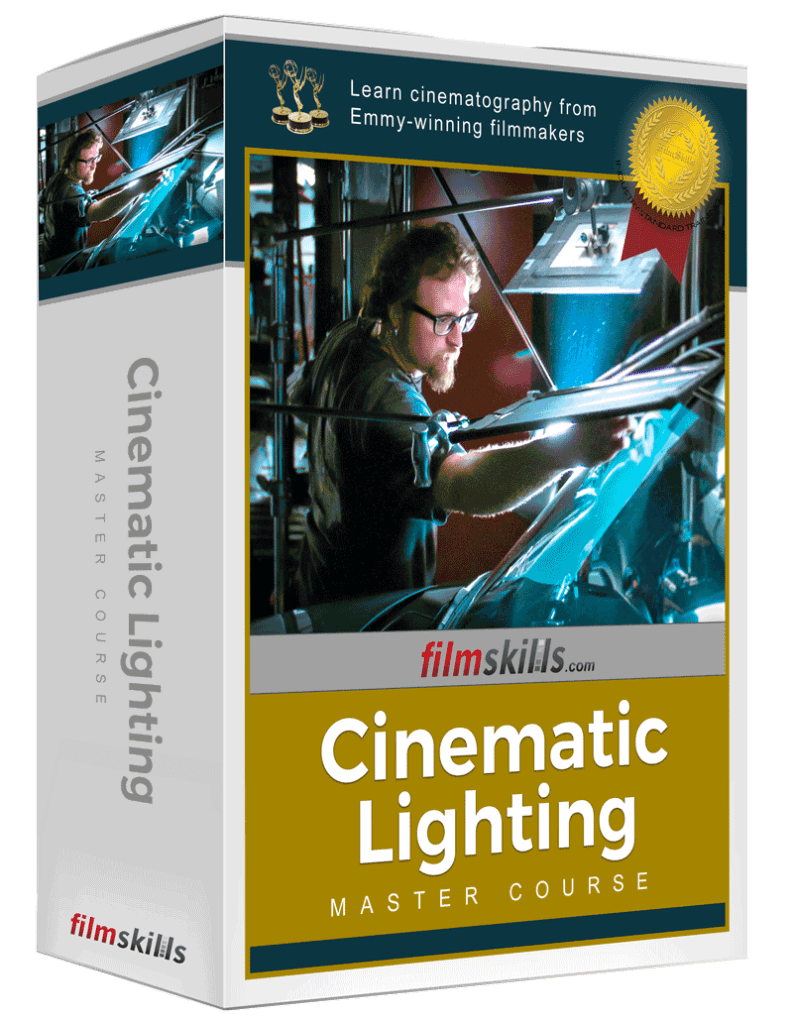Cinematic Lighting Master Course
Emmy-winning cinematographers teach you the gear, tricks, and techniques to achieving a professional cinematic look on set.
"This series has the best lighting information on the internet. Theory is great, but watching a pro in action is incredible."
– Nick Vokey
PRODUCED IN PARTNERSHIP WITH

The Complete Cinematic Lighting Course
34 methodical lessons take you guide you through the tools, techniques, and process used to create a professional cinematic look
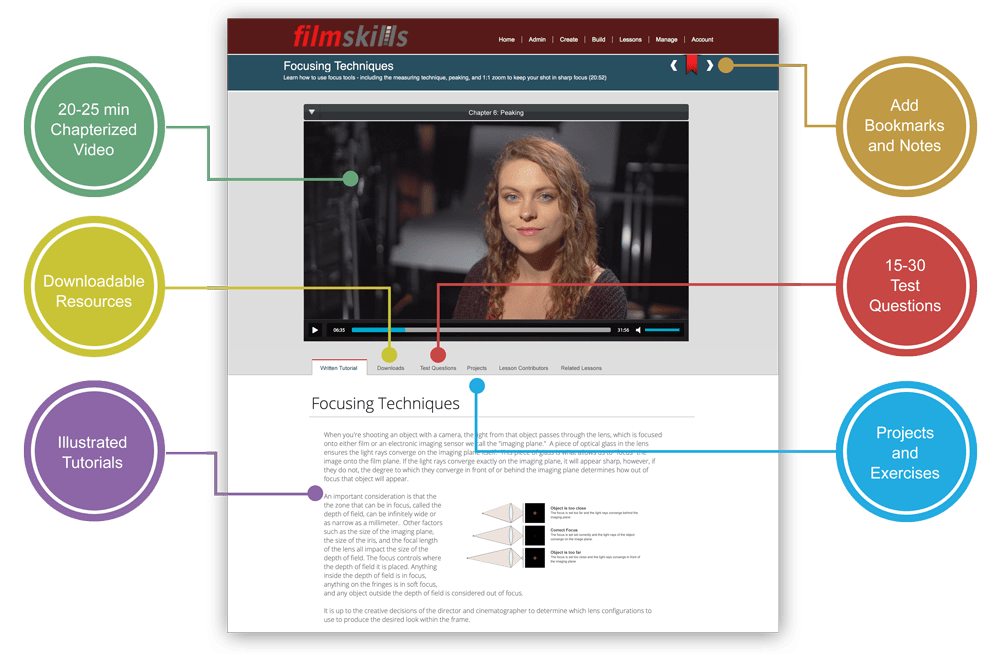
These are the most useful videos I have ever seen. It made everything click in a way it never has before. Thank you!
– Nelson Hayes
LIFETIME ACCESS • FREE CONTENT UPDATES
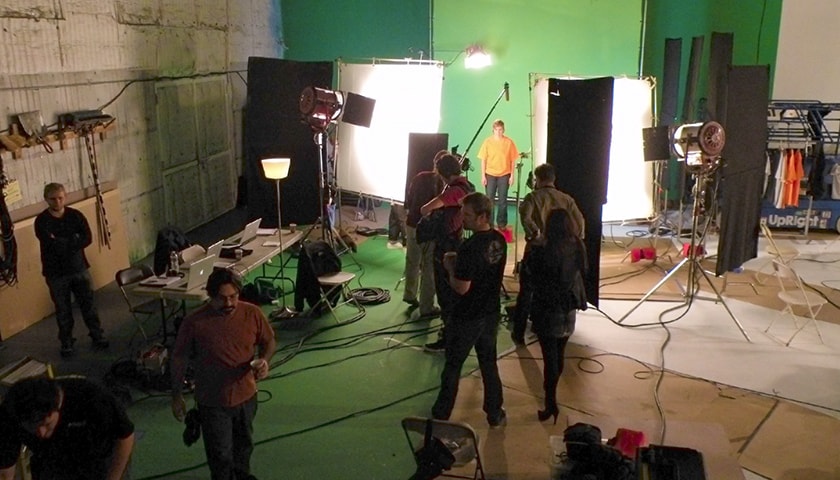
11 hours of on-set video tutorials
We take you on set to show you Hollywood techniques to making your videos more cinematic
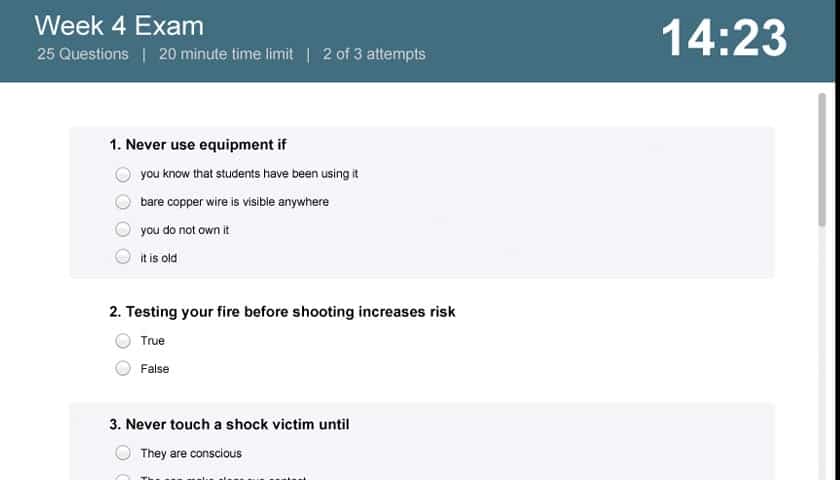
Includes quizzes to test your knowledge
Take quizzes after each lesson to help you practice and learn your new skills.
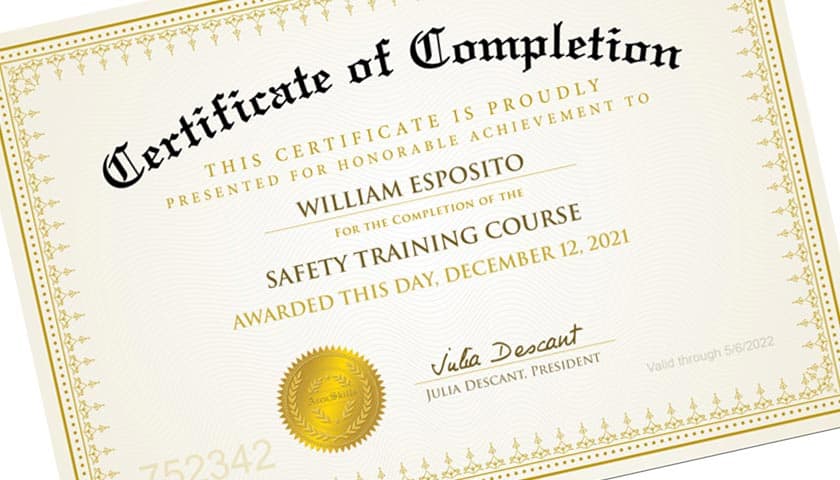
Certificate of Completion
Earn 85% or higher and receive a personalized certificate and be listed in our Certification Database.
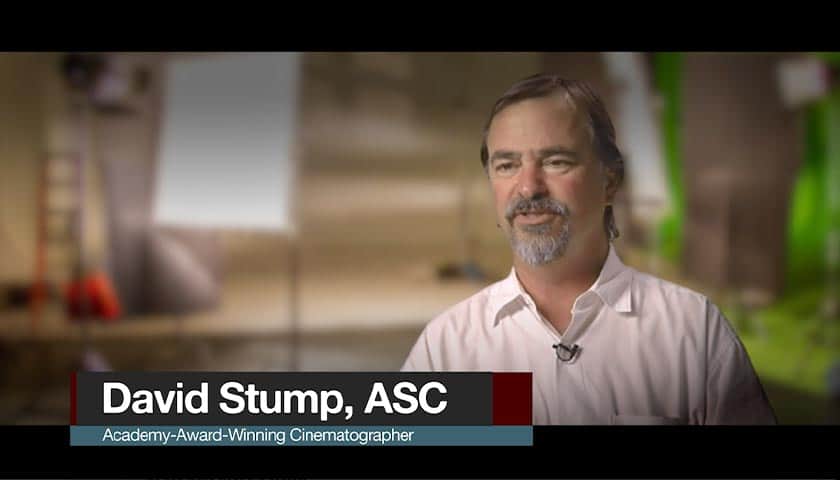
Learn from expert filmmakers
We partnered with Oscar and Emmy winning filmmakers who reveal their techniques
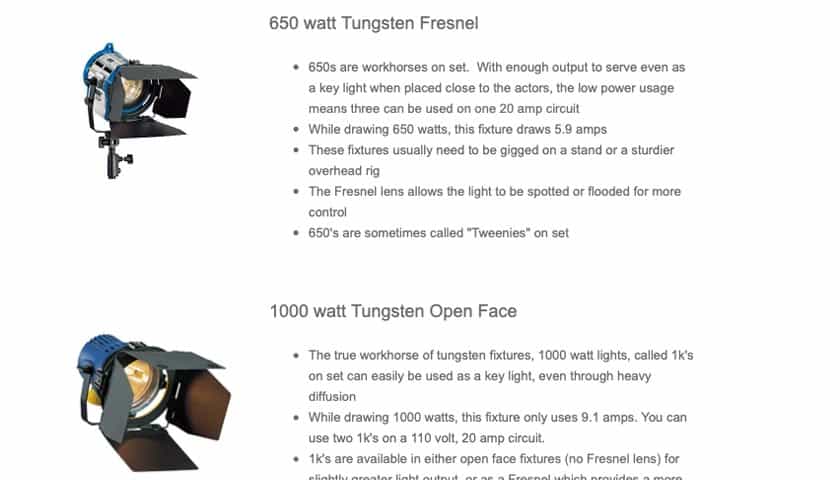
Illustrated companion guides
Each lesson comes packed with supplemental reference material to help you on set
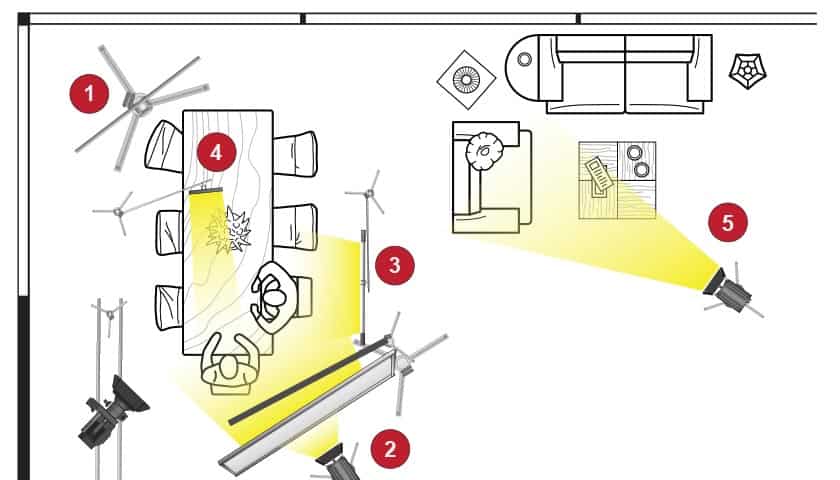
Lighting Diagrams
Comprehensive lighting diagrams to help you apply our techniques to your set
USED IN OVER 125 TOP FILM SCHOOLS

I really appreciated the details. This wasn't about a "name brand" type of light or piece of equipment, but meat and potatoes filmmaking. Much appreciated.
– NIKONGUY1960
Section 1:
Lighting Gear
Learn how to select and use the right light fixtures for the job. From Tungsten and HMIs to Kino-Flos and LED lights, learn the tools of the trade.
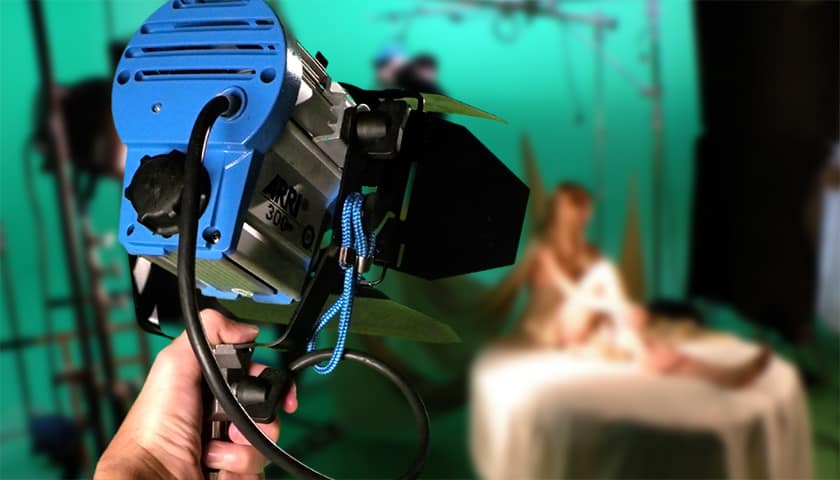
Lesson 1
Tungsten Lighting
Tungsten lights have long been the workhorse lighting fixtures on a movie set, creating a warm light that accentuates skin tones and makes your on-screen talent glow. Although LED lights have been growing in popularity, Tungsten lights remain a favorite for the look they create. In this lesson, we walk you through the pros and cons, techniques, and considerations when working with Tungsten lights on your movie set. (11:48)
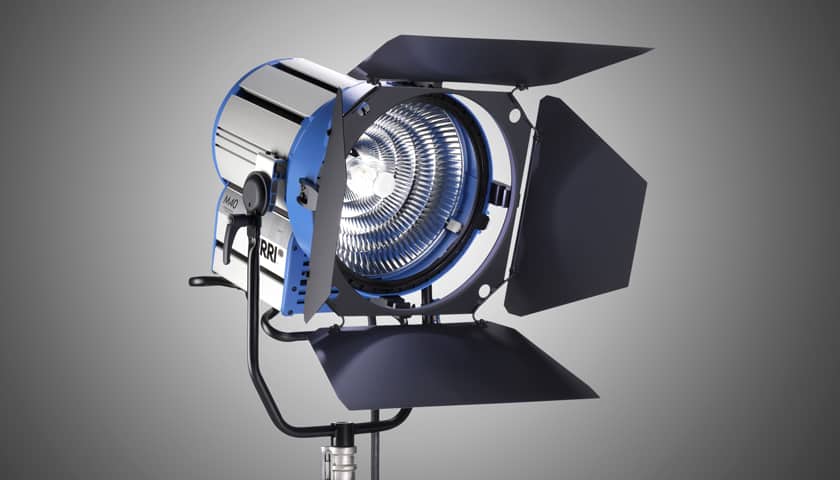
Lesson 2
HMI Lighting
HMIs are among the film industry’s most often-used light, especially when you need a lot of lighting power. HMIs are sophisticated, ballast-controlled fixtures that create a light with the same color of sunlight and is ideal for use outdoors and in situations where sunlight is the dominant ambient source. This video takes you through every step of working with, trouble shooting, setting up, and working with HMI lights. (19:22)

Lesson 3
Kino-Flo Fluorescent Lighting
Kino-Flos are the industry-leading fluorescent light fixtures long-used on just about every film and TV set. Adapting commercial fluorescent lighting technology, Kino-Flos are specially designed to produce 3200K light to color balance with Tungsten light fixtures, and 5600k blubs to match sunlight without any flicker. Kino-Flows are the light of choice when you want a soft, even light on your actors that don’t draw much power. In this lesson, learn how to choose and use Kino-Flos on set. (14:20)
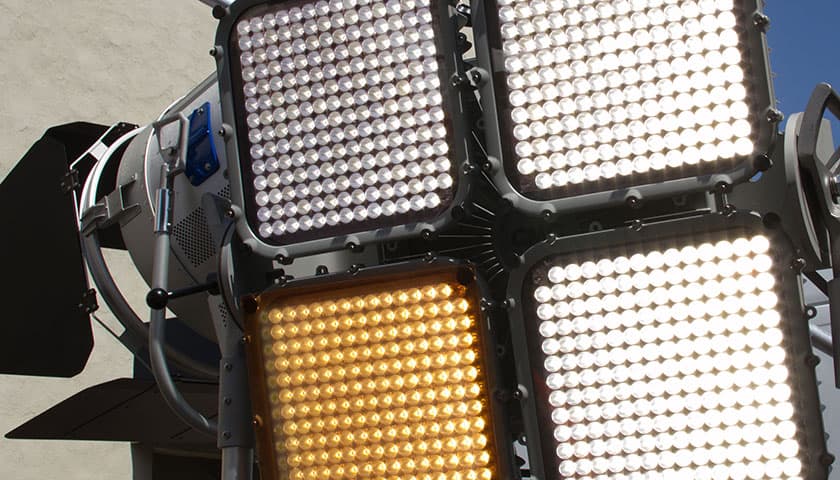
Lesson 4
LED Lighting
LED lights are among the newest lighting fixtures available to cinematographers, and produce a high-output, low-power consumption light. Rapidly becoming the workhorse on set, LED lights are providing a range of options and tools to help you create the right look on screen. In this module, we will explore how LEDs work, their pros and cons, and tips for properly using them on your set. (7:10)
"I have perused YouTube for lighting tutorials, but trust me, your... everything is so awesome and way better. Thanks so much, boss!"
– Smiles Digital Arts
Section 2:
Grip and Rigging Gear
From C-stands to Cardellinis, we unload the grip truck to show you how to properly and safely use the most commonly used grip and rigging gear.
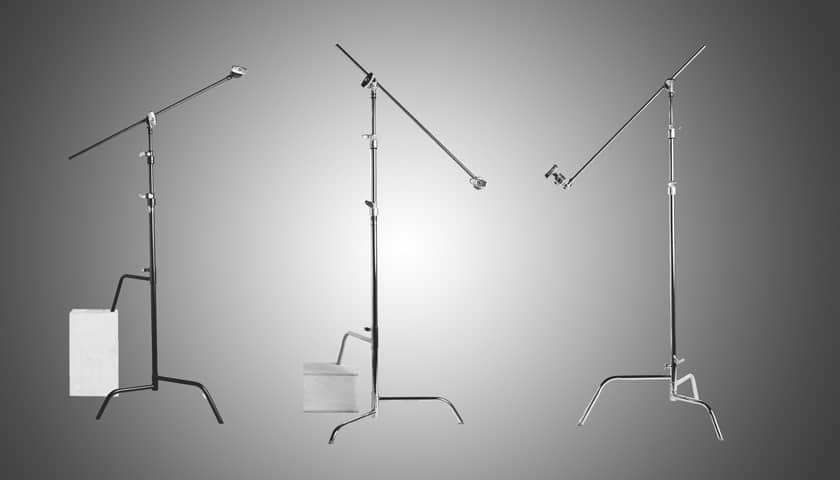
Lesson 5
Grip and Rigging: C-Stands
The C-stand is one of the most commonly-used stands on a movie set, and for good reason! In this lesson, learn how to properly use a variety of C-stands, including turtle base, spring loaded, as well as rigging options for grip heads and arms.
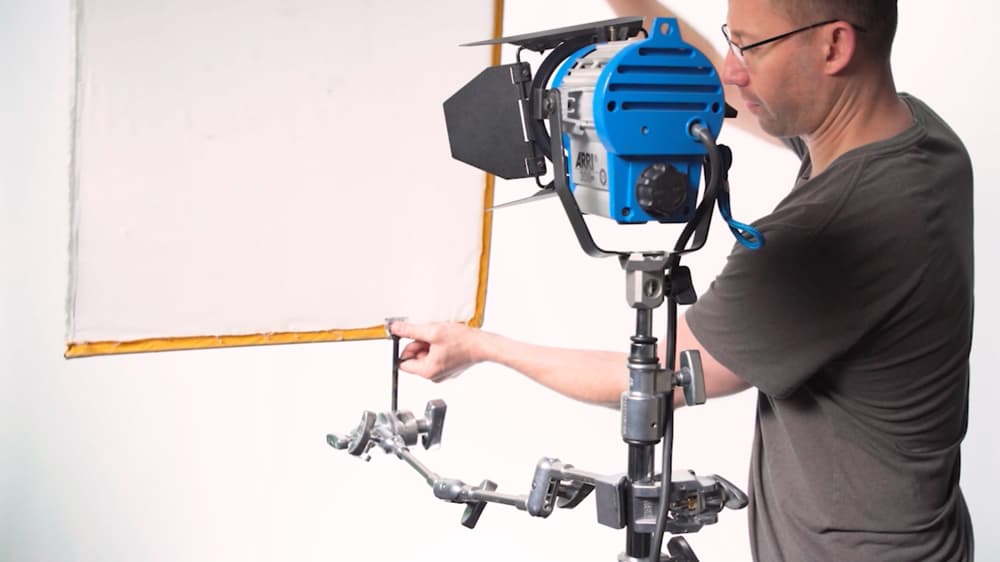
Lesson 6
Grip and Rigging: Clamps
We unload the grip truck to show you how to use common clamps used on film sets, including mafers, cardellinis, C-clamps, furniture clamps, playtpus clamps, scissor clamps, gaffer grip, and how to use each clamp safety. Learn what grip gear to get, how to choose the right clamp for the job, and how to make your rig safe and secure.
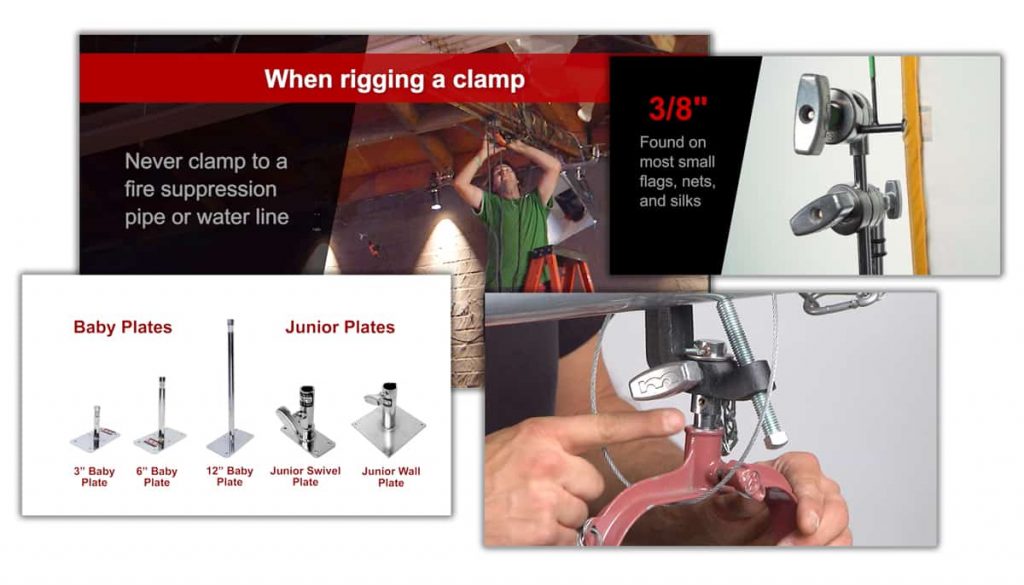
Lesson 7
Grip and Rigging: Rigging Hardware and Techniques
After learning about clamps, we’ll show you how to safely use grid and pipe clamps, lollipops, offset arms, wall plates, double and triple headers, grip heads, wall spreaders, Mattpoles, putty knife, and chain vice grips to put a light fixture virtually anywhere!

Lesson 8
Grip and Rigging: Stands
From baby and combo stands, to hi-his and low boys, learn how to safety use industry-standard stands on set, which stand to choose, and how to safely rig them.
Lesson 9
Grip and Rigging: Grip Support
Learn how to properly use sandbags, apple boxes, taco carts, and furni pads on set.
Lesson 10
Grip and Rigging: Grip Tools
Always be ready for anything on set. Hollywood Dolly Grip Casey Slade reveals the essential tools every grip should have on set.
"This was super helpful! I'm just learning lighting and your explanation was easy to understand. Thank you for making these videos."
– Reichardt Adrienn
Section 3:
Lighting Techniques
Now that you know the tools, we can get into the fun stuff – lighting techniques. Emmy-winning cinematographer Jason Tomaric guides you step-by-step through each lighting technique to create, control, soften, and shape light to get the desired look on set.
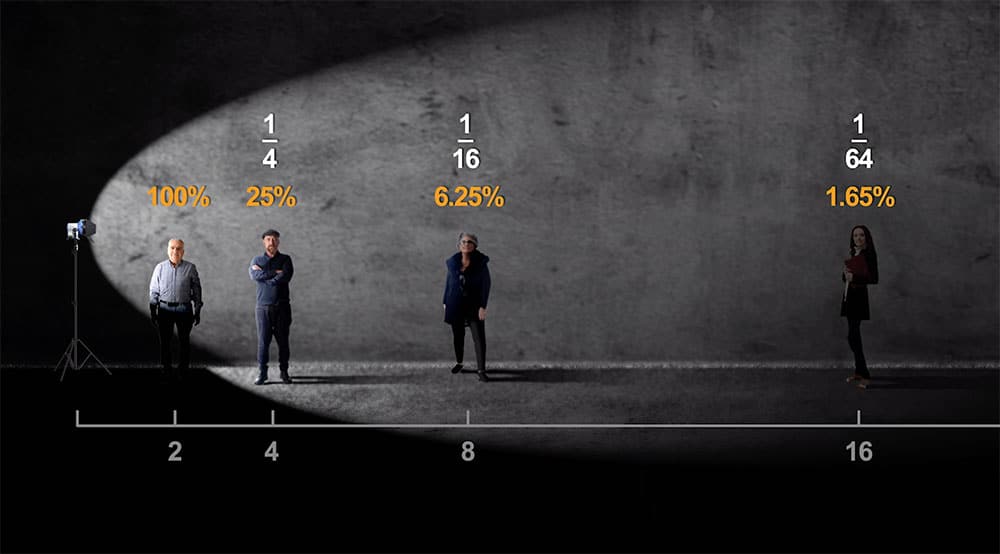
Lesson 11
Light and Exposure
The art of exposing a shot is determining how to assign the brightness values of real world objects to the range of brightness values your camera is capable of seeing. These are the core concepts that photography and cinematography are built on and I’m going to help you understand them so you can apply them on your projects and make the best images possible.
- How we measure light in foot candles and lux
- How f-stops are used to calculate changes in light
- How to work within the dynamic range and latitude of a camera
- The difference between Rec709 and Log curves
- Contrast and ratios for exposuer and lighting
- How to use the Inverse Square Law to adjust exposure
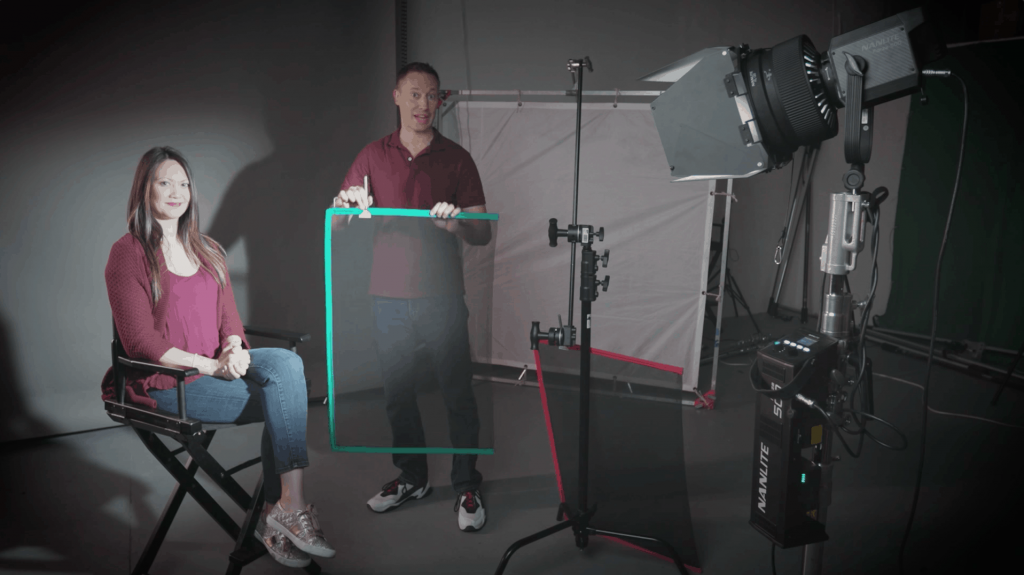
Lesson 12
Techniques to Reduce Light
The all-new video tutorial (26:43) methodically guides you through the tools and techniques used to reduce light on your subject. This lesson covers:
- Working with wire scrims
- Working with dimmers
- Remotable Wi-Fi dimming options
- Solids, cutters, and floppies
- Creating negative fill
- Lensers and Courtesies
- Protecting fabric scrims
- Scrim and C-stand rigging safety
- Neutral Density gel on windows
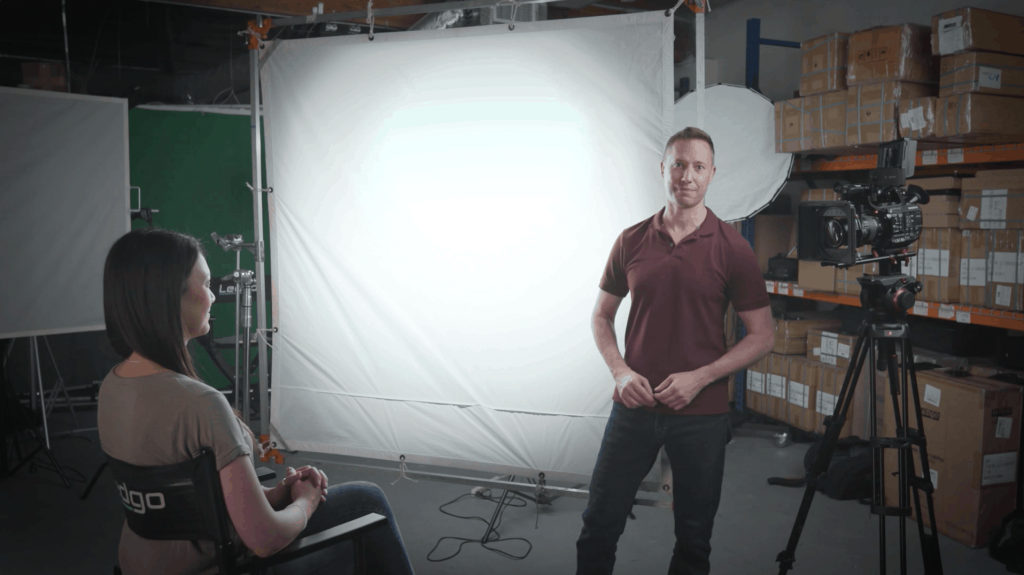
Lesson 13
How to Create Soft Light
- How to control the size of a light source
- Using Fresnels to craft the spread of light
- Controlling wraparound
- Working with diffusion on barn doors
- Working with soft boxes and Chimeras
- Skinning 4x4s
- Working with 6×6 overheads
- How to control spill from soft light sources
- Real world demo
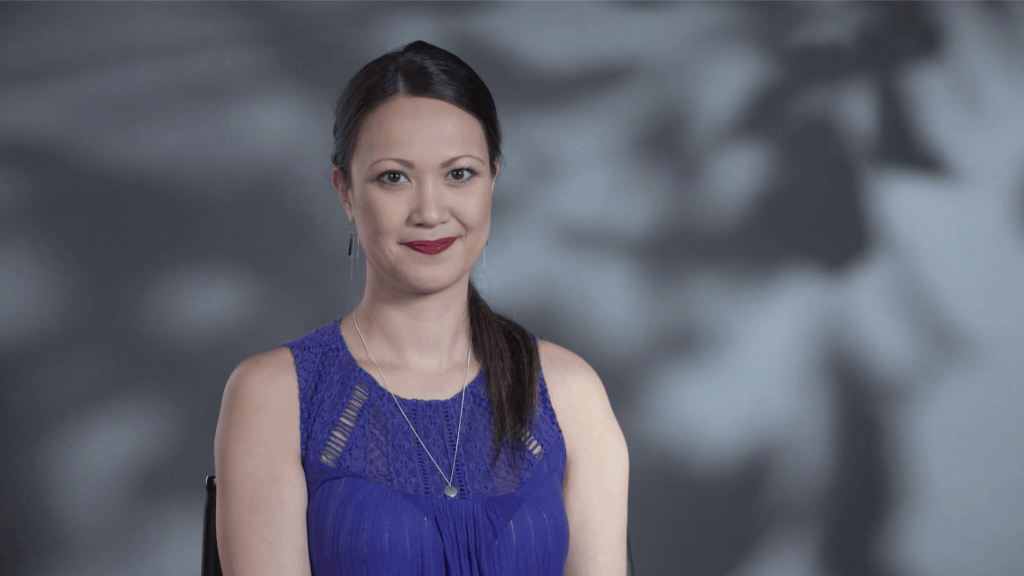
Lesson 14
Techniques to Shape Light
- The power of shadows
- Creating internal vs external shadows
- Benefits and drawbacks of bard doors
- Working with black wrap
- Egg crates and louvres
- Flags and solids
- Creating gobos
- Working with a cucoloris and brancholoris
- Building duvatyne skirts
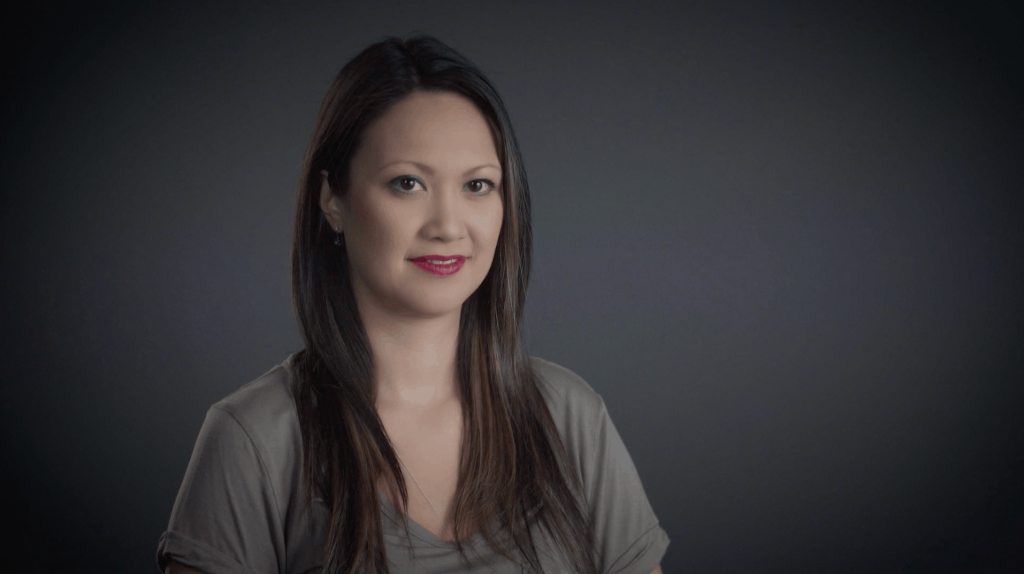
Lesson 15
Working with Reflected and Bounced Light
- Factoring in the Inverse Square Law
- Foam core and bead board
- Collapsable reflectors
- Shiny boards
- Physics of reflected light
- Bouncing light off ceiling
- Working with overheads
- Shaping hair lights
- Working with mirrors
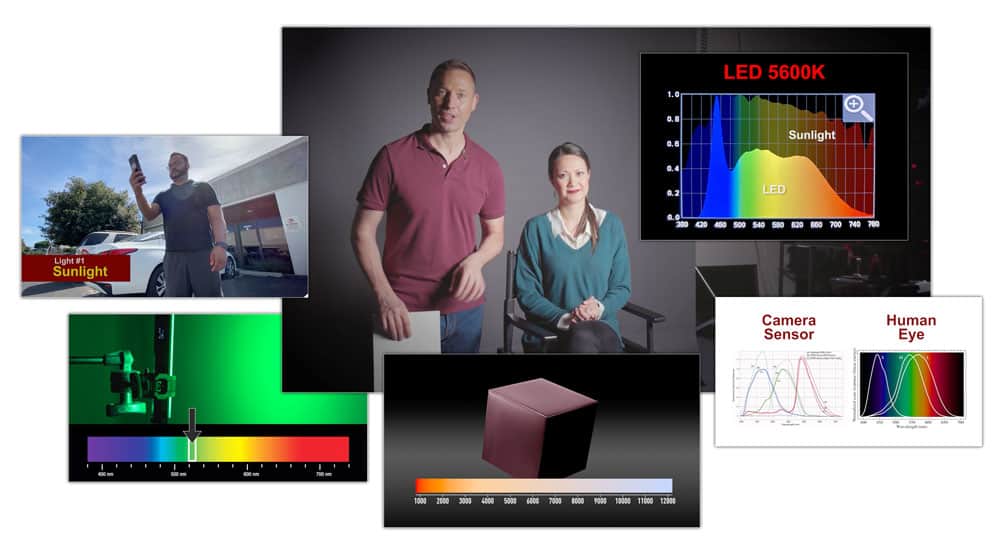
Lesson 16
Color Temperatures and White Balance
- Defining how a camera sees white
- The Kelvin scale – origins and how it’s used
- How the imaging sensor sees color
- Measuring light sources with a spectrometer
- White balancing techniques
- How to cheat white balance

Lesson 17
Working with Mixed Light
- How to use gels to color correct light sources
- Light loss calculations through gels
- Working with LEDs
- Working with sunlight
- How to gel windows
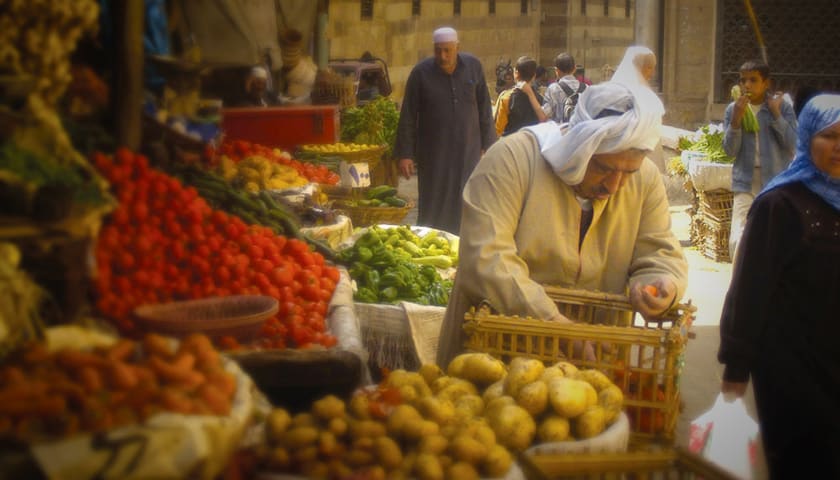
Lesson 18
Attributes of Light
Lighting is one of the most powerful tools in the cinematographer’s tool kit, and understanding how to light means knowing the qualities of light. In this hand-on lesson, learn the attributes of light and how to control each one to create the desired visual and emotional tone on screen.
- How the brightness of a light source affects the lighting
- How to manipulate the contrast ratio and how to use it to enhance the emotion of a story
- The importance of the direction of a light source
- Falloff and how to properly use it when lighting a large area
- How to control the spread of a light source
- Wraparound and how to use it to light the face
- Specularity and how to control it
- What tools to use to manipulate the attributes of light
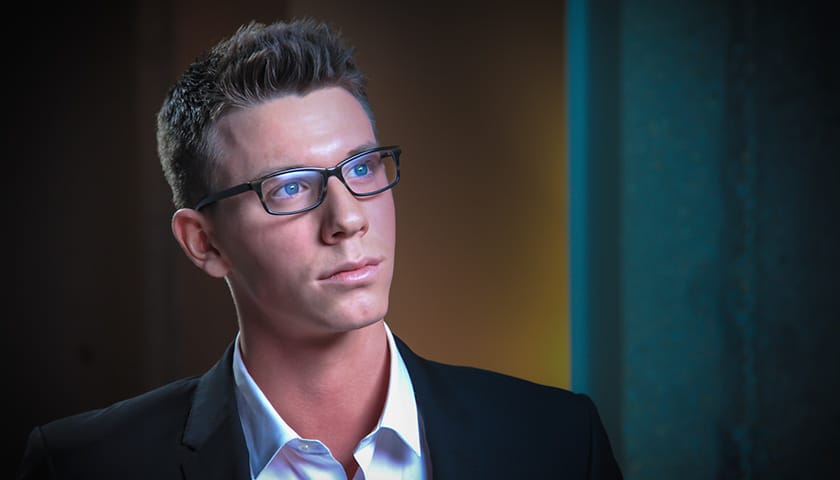
Lesson 19
Three Point Lighting
Lighting the human face is the most important aspect of the cinematographer’s job, and in this lesson (21:28) you will learn a variety of three point lighting techniques and how to craft a look that supports the story. Learn how to create beautiful Rembrandt lighting, side lighting, split lighting, butterfly lighting, plus techniques for beauty lighting, natural cinematic lighting, interview lighting, and much more.
- Three point lighting techniques
- Butterfly lighting
- Loop lighting
- Split lighting
- Rembrandt lighting
- How to shoot with or against the key
- How to craft an eyelight
- Working with ambient light
- Using fill light
- Rim lights
- How to set-up a kicker
- Wraparound and hard vs soft light sources
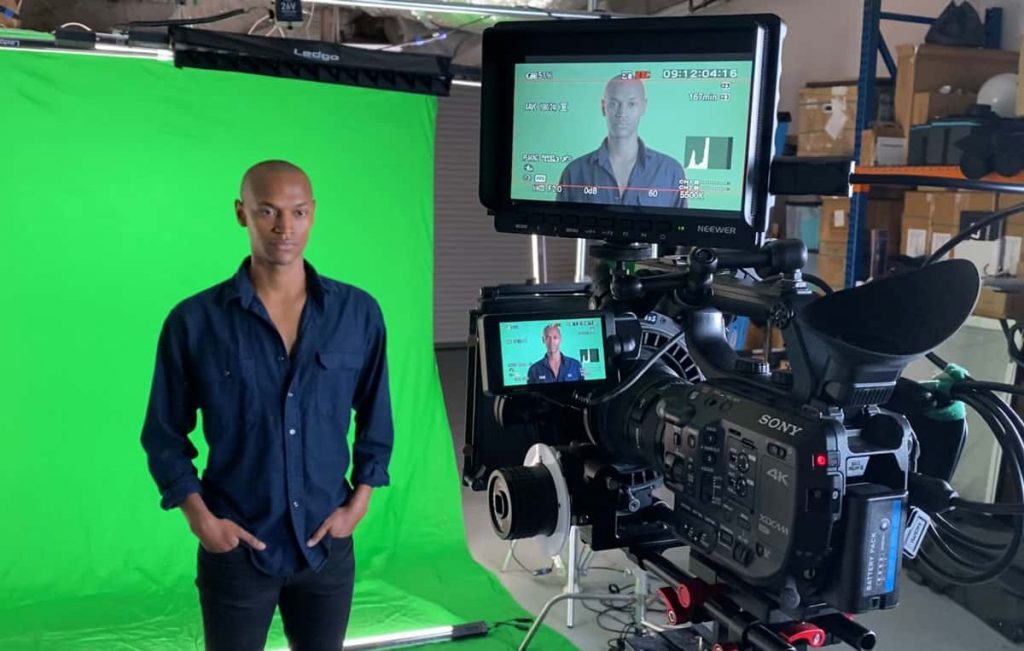
Lesson 20
How to Light and Shoot Green Screen
- When to choose green or blue
- Differences between chromakey and digital blue/green
- Shooting in a studio vs on location
- How to light green screen (space lights, cyc lights, LED, Kino-Flo, book lights)
- How the bit depth and compression affect a key
- Capturing in LOG vs REC709
- How to expose actors
- How to reduce spill and create a cleaner key
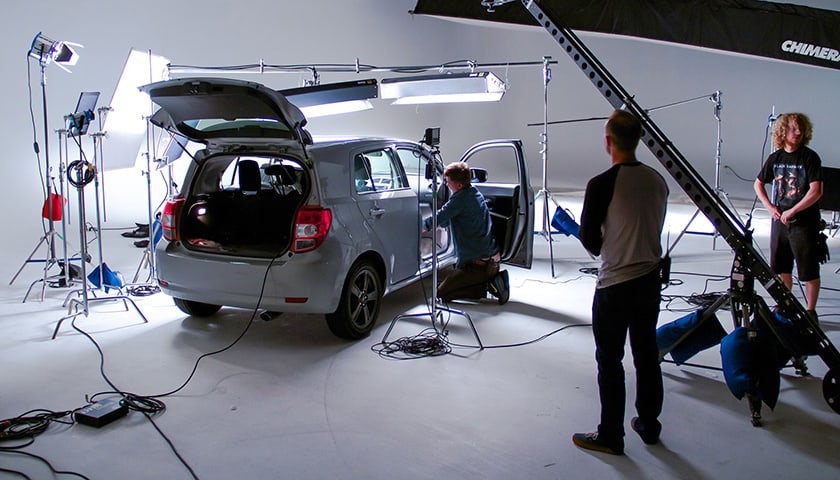
Lesson 21
How to Light a Scene
When you first step onto a set or scout a location, it can be an overwhelming experience trying to figure out how to light the scene. Where do you start? Where do you put the key light? How do you work with the ambience? This module not only gives you valuable pointers and a step-by-step guide to planning the lighting for a scene, but Emmy-winning DP Jason Tomaric, Vice President of Lighting of Arri John Gresch and veteran gaffer Ron Sill walk you through the lighting of a scene for a movie. See for yourself the DP’s process as he shares his tips and techniques with you from first thoughts of the set through the final lighting.
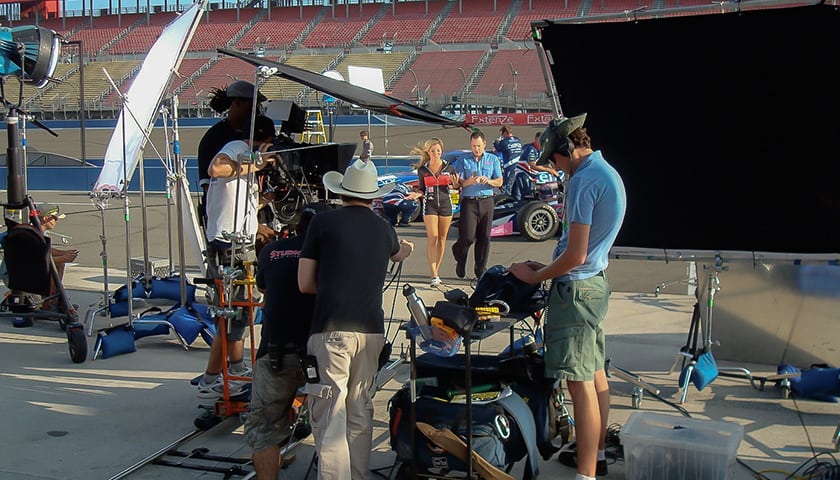
Lesson 22
How to Light Daytime Exteriors
When working outside, the sun can be your greatest asset or your greatest challenge. This module teaches you how to craft sunlight to create properly-exposed images every time. Learn how to shoot at high noon and avoid cavernous shadows under your actors’ eyes. Learn how to use both professional tools as well as make-shift tools when shooting on a distant location. Improve the quality of your outdoor scenes dramatically with this lesson.
Section 4:
On-Set Lighting Demos
In the fourth section of the FilmSkills Cinematic Lighting Master Course, we apply all the previous concepts onto real-worlds sets. Learn to identify and manage location challenges, choose the right gear, set the proper exposure, and achieve the desired emotion on screen.
Emmy-winning cinematographer Jason Tomaric goes on set to block, light, and shoot 8 sample scenes, methodically walking you through every step of how to achieve professional cinematic results. Whereas previous FilmSkills lessons focus on the tools, this series applies that knowledge to practical, real-world settings. In this comprehensive series, students learn a variety of skills and techniques.
- How to choose the lens, plan the camera movement, and set the frame
- How to identify exposure and color problems
- How to gel windows to balance brightness of sunlight with production lights
- How to effectively use white balance and color temperatures to achieve the desired color palette
- How to shoot a night scene while producing a clean, solid image
- How to use a waveform monitor and false color
- How to use a light meter to determine contrast
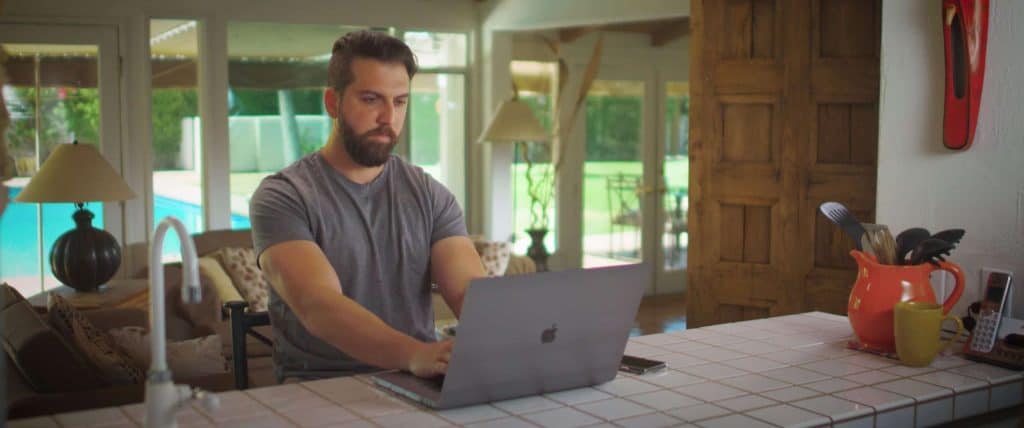
Lighting Kitchen Scene with Bright Outside Sunlight
Learn how to address exposure issues when shooting on location with windows, how to gel windows, balance exposure, and create natural, motivated lighting. (19:12)
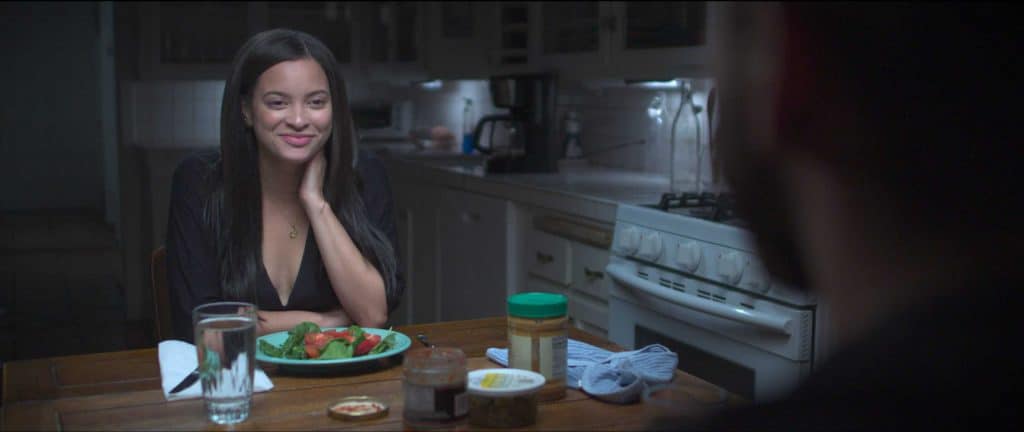
Shooting a Nighttime Dialogue Scene
Learn how to shoot dialogue scene between two people at night, on location. Covering both his and her shots, this tutorial guides you through the blocking, composition, and lighting decisions behind creating a cinematic night scene. (23:02)
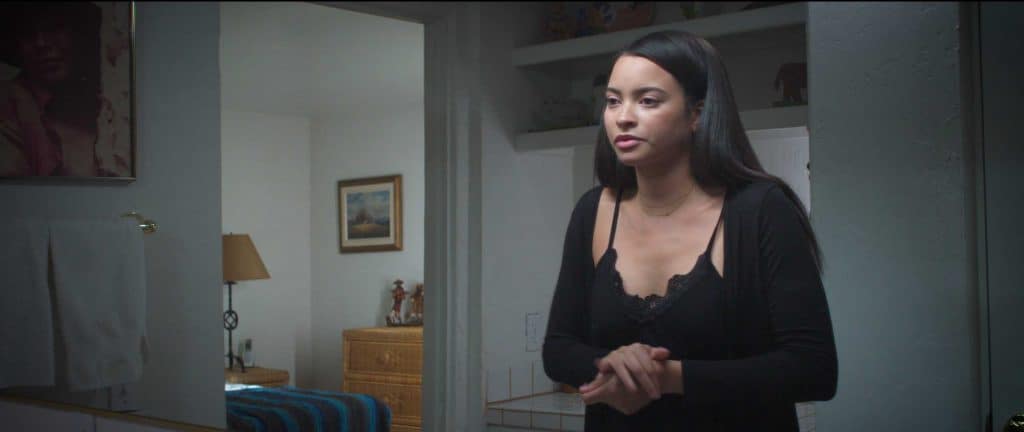
Lighting a Small Location
Shooting in a small, confined space like a bathroom creates a range of production challenges, which we systematically address in this engaging tutorial. From a simple bathroom to a dramatic shot, learn how to achieve the desired look on set. (24:20)
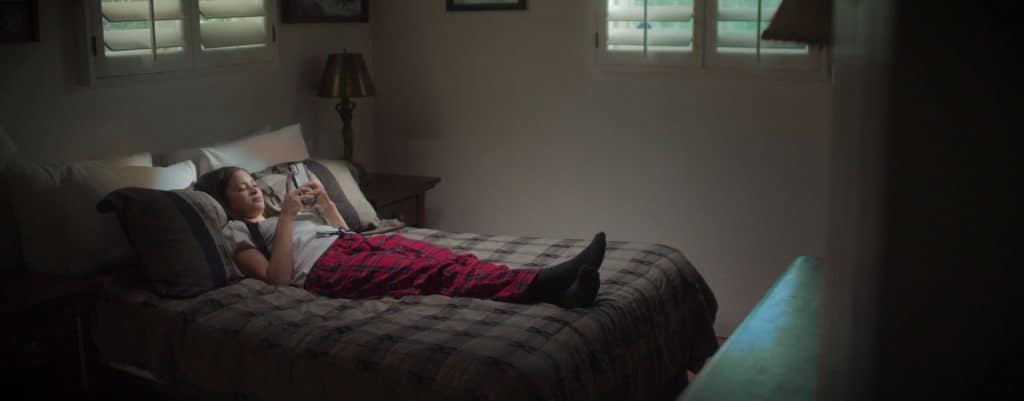
How to Light a Bedroom - Daytime
Learn how to create a sculpted light in a bedroom interior during the day. In this lesson, learn how to balance exposure between the subject and outside sunlight, all while creating a cinematic look. (20:17)
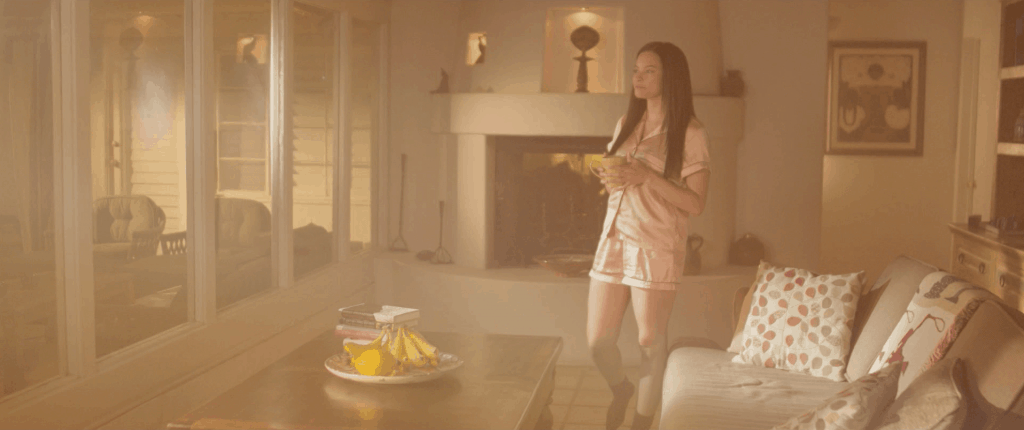
How to Make Nighttime Look Like Morning
In this on-location tutorial, learn how to create a morning light on a nighttime set. From working with haze and creating volumetric light, students learn to block and light for a cinematic look. (16:20)
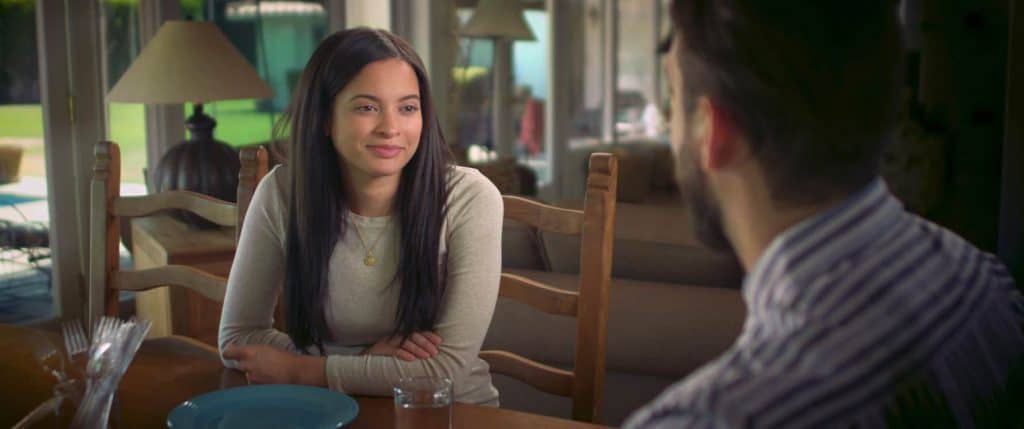
Light Daylight Dialogue Scene
One of the most common scenes in a production is the interior dialogue scene. Learn how to address exposure issues when shooting on location with windows, how to gel windows, balance exposure, and create natural, motivated lighting. (33:19)
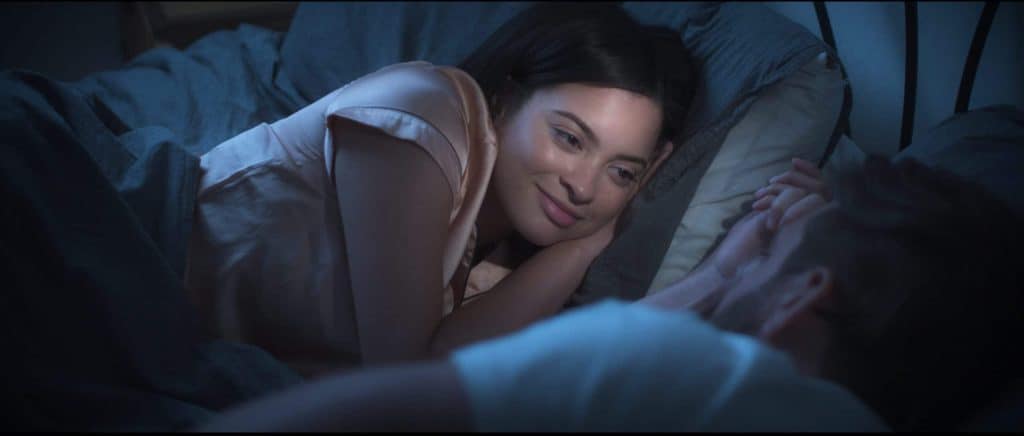
Light a Nighttime Bedroom Scene
In this tutorial, learn to shoot a realistic night scene that achieves the desired emotional tone, all while producing a clean, noise-free image. (23:18)
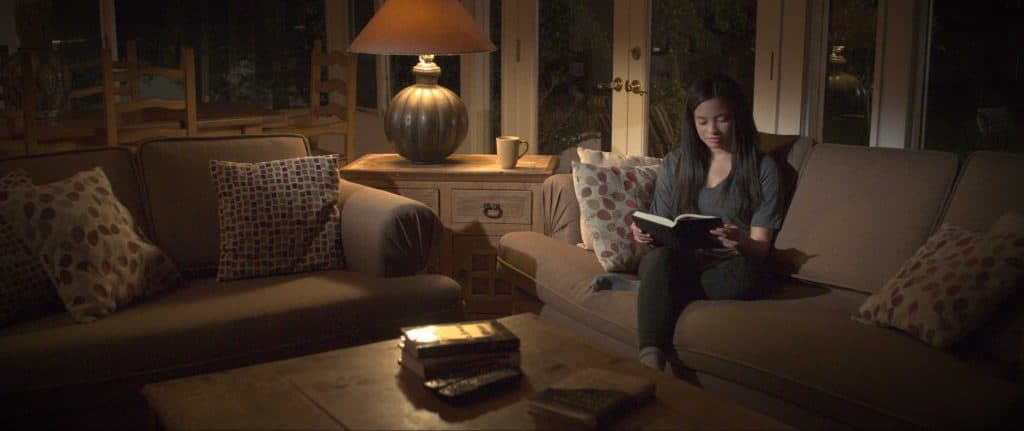
Light a Nighttime Living Room Scene
In this lesson, learn how to light and shoot a scene with practical light fixtures, how to enhance the light so it is motivated, and how to bring the outside into the latitude of the camera. (12:32)


Get it all and
save over 70%
- Lifetime access to the entire FilmSkills library
- PLUS... 75 FREE bonus lessons
- PLUS... Get all new content FREE
- PLUS... Personal training
- PLUS... 6 FREE reference books
- PLUS... Discounts on software and gear
$3,388.99
only $949
"I signed up for FilmSkills Unlimited. Absolutely invaluable course. I would go this far and say that this is the best online course on the topic. The catalog is broad and given the range of subject covered, the value is unbelievable. Highly recommended."
– Manoj Jayadevan
